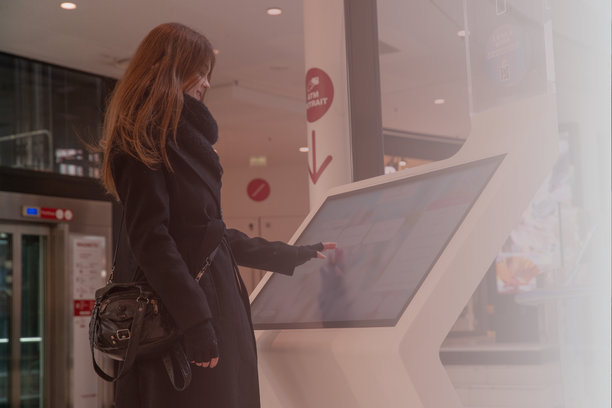Wayfinding is more than signs and arrows, it’s the invisible guide that helps people navigate complex spaces with confidence. Whether in an airport, hospital, or shopping mall, a well-designed wayfinding system offers comfort, reduces stress, and ensures visitors reach their destination efficiently.
Indeed, we all know the relief of spotting a clear sign to baggage claim. Conversely, we also remember the frustration of getting lost when guidance is poor. Over time, however, that guidance has evolved beyond static signs to become smarter, faster, and far more personal.
From Static to Seamless: The Rise of Digital Wayfinding
The COVID-19 pandemic transformed how people interact with public spaces. With the surge in smartphone use and demand for contactless experiences, digital wayfinding has replaced outdated static signage as the preferred navigation method.
A digital wayfinding system guides visitors through four seamless steps, integrating technology at every stage:

Current Location: Interactive kiosks and mobile apps instantly determine and display a user’s position on a clear, 3D map.
Intuitive Search: Users can easily find a specific store, service, or product through keyword searches or categorized browsing, directly on the kiosk or their smartphone.


Dynamic Route Calculation: The software provides the most efficient route, which can be viewed on a kiosk screen or directly on a personal device.
Mobile Integration: With the surge in smartphone usage since 2020, visitors increasingly prefer a personal, mobile solution. Routes can be seamlessly transferred to their phones, offering continuous, private guidance that eliminates the need to remember a complex path.

ViaDirect: The Next Generation of Navigation
ViaDirect delivers a complete, modern wayfinding solution that adapts to the needs of a post-pandemic world. Our interactive kiosks, mobile solutions, and 3D maps provide:
- Real-time updates for schedules, events, and temporary closures
- Multilingual interfaces for global audiences
- Accessible routes for people with reduced mobility (PMR)
- Seamless mobile integration for app-free navigation
Present in over 35 countries, ViaDirect helps airports, shopping malls, hospitals, universities, and more create a stress-free visitor experience that increases satisfaction and encourages return visits.
Make navigation your strength.
A satisfied visitor comes back, but also recommends you to others. Transform your visitor experience with ViaDirect.










